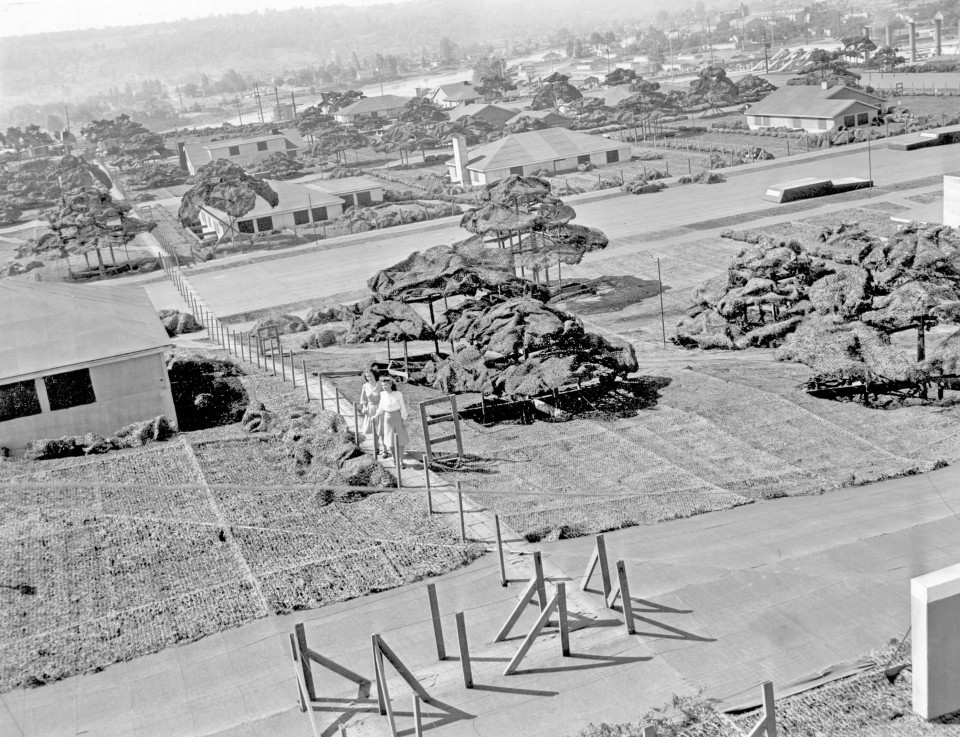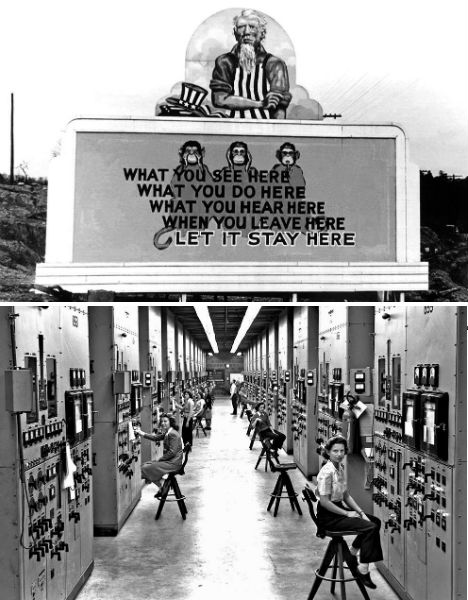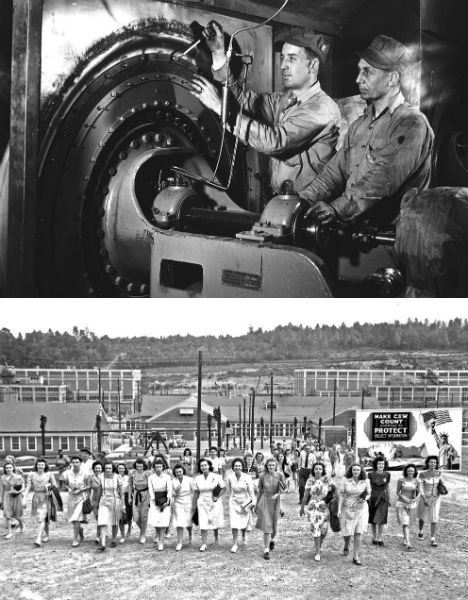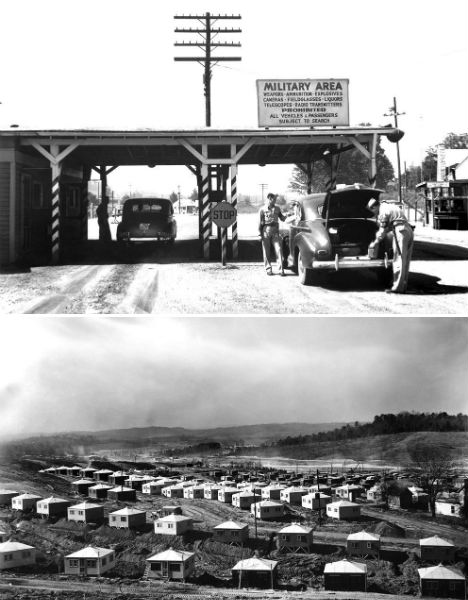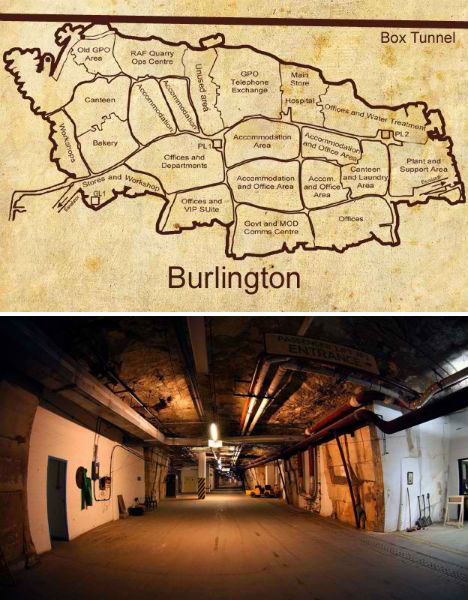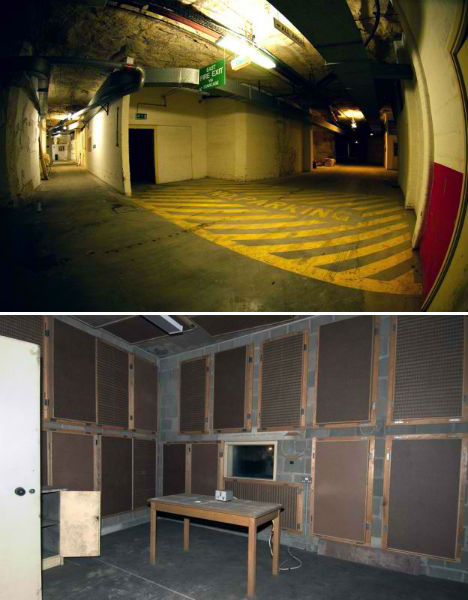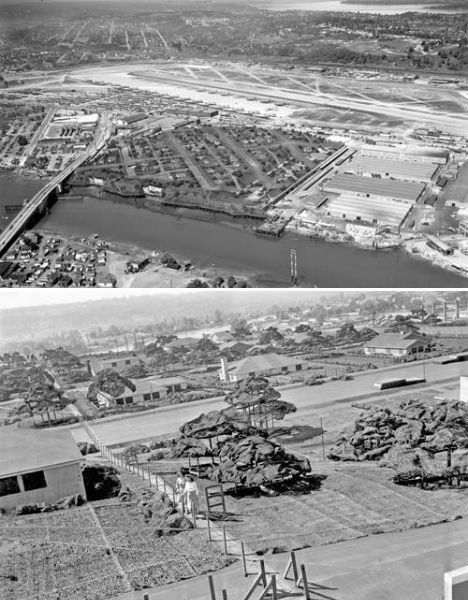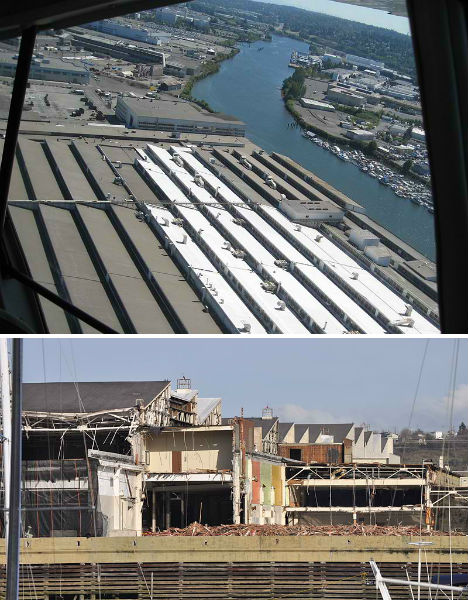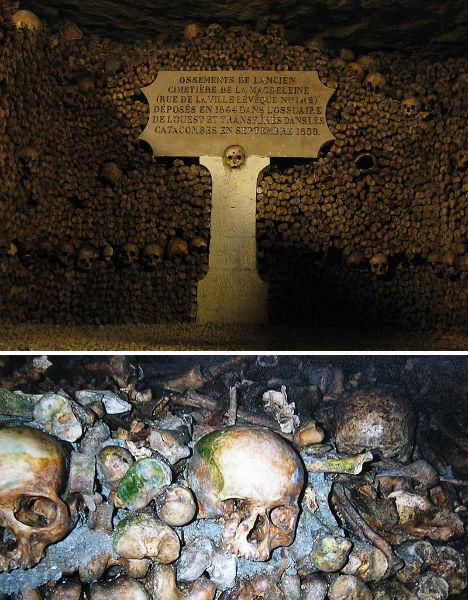Bunkers under luxury hotels, wartime factories hidden beneath fake neighborhoods and vast systems of intricately decorated tunnels just beyond humble houses are among the many incredible architectural wonders just out of sight. Often built for top-secret purposes like manufacturing weapons or housing important officials during attacks, these complex and fascinating facilities went undiscovered for decades.
America’s Top-Secret Atomic Cities
“What you see here, what you do here, what you hear here, when you leave here, let it stay here.” So say posters and billboards that were once posted all over Oak Ridge, Tennessee, one of the United States Government’s three secret cities that toiled away on The Manhattan Project: atomic bombs that would soon devastate two cities in Japan. 75,000 employees lived and worked in Oak Ridge with absolutely no idea what they were actually party to. Their town wasn’t even on the map, and visitors were restricted. They didn’t find out the exact nature of their work until the infamous atomic bombings of Hiroshima and Nagasaki, in the final stages of World War II in 1945.
Oak Ridge joined Los Alamos, New Mexico and Richland, Washington as a major research and development site producing fissionable materials for nuclear weapons. Employees brought in from other areas of the country were screened with lie detector tests. There were so many of them in this small town with a former population of just 3,000, the government had to house them in temporary huts. Hundreds of photos of life inside Oak Ridge were captured by Ed Westcott, the only government-authorized photographer during the Manhattan Project. The American Museum of Science and Energy has published them on Tumblr.
Britain’s Secret Underground City of Burlington
You’d never guess that below a charming historic market in Wiltshire, England is an entire underground city inside a system of limestone caves. And it’s not dank and primitive. Built in the 1950s to house 4,000 central Government employees during a nuclear strike, the mile-long facility with sixty miles of roadways has kitchens, laundry facilities, its own pub and even a communications hub from which the Prime Minister would have addressed the nation in the event of a real attack.
The Burlington Bunker can withstand bombs, radiation and poison gas, and was designed to sustain its inhabitants for a three-month stretch. In fact, it boasted an underground lake (now drained) to provide fresh water, and a secret rail line from London for the English Royal Family. Virtually no one knew about the existence of Burlington until 2004, when it was decommissioned – now there are photos, videos and maps available online
The Fake Washington City Hiding Boeing’s Wartime Plant
Anticipating the possibility of a direct attack on its most important facilities during World War II, Boeing didn’t want to take its chances with vast factory roofs that would be clear from the air. So at the Seattle facility known as Boeing Plant 2, the company created a surprisingly convincing form of camouflage in the form of a fake neighborhood. Blending in fairly well with its surroundings, the plant was covered in streets, trees and plywood shells of houses. A Hollywood set designer was brought in to make sure the housing development looked as realistic as possible. Boeing Plant 2 helped turn Seattle into a boomtown for technology, and the bombers built there helped win the war.
Luckily, the ploy was never tested. After the camouflage was removed, the factory sat empty and abandoned for decades before it was demolished in late 2010.
Secret Society in the Catacombs of Paris
The Catacombs of Paris are mysterious enough on their own, an underground ossuary holding the remains of about six million people connecting to a larger system of tunnels throughout the city. But in 2004, they became even more intriguing as police discovered that they were in use as a hidden lair complete with an underground cinema. Using pirated electricity, the 3,000-square-foot space even had a security system mostly made up of recorded barks of guard dogs. What the cops first thought was a bomb later turned out to be a couscous maker. Once their hideout was discovered, those responsible for it came back in the night to claim their equipment, wiring and booze. Parisians wondered what secret society could possibly have been using the space, with news outlets theorizing “extreme right-wing” connections.
The truth is not quite so dramatic, though no less interesting. An anonymous group of Parisian underground explorers calling themselves LMDP built the cinema and other areas nearby over a period of 18 months starting in 1999, and screened Urbex movies for audiences of twenty to thirty people. The main point was escaping the realities above the surface, holding free events for those in the know. Read the whole story at Gizmodo.
